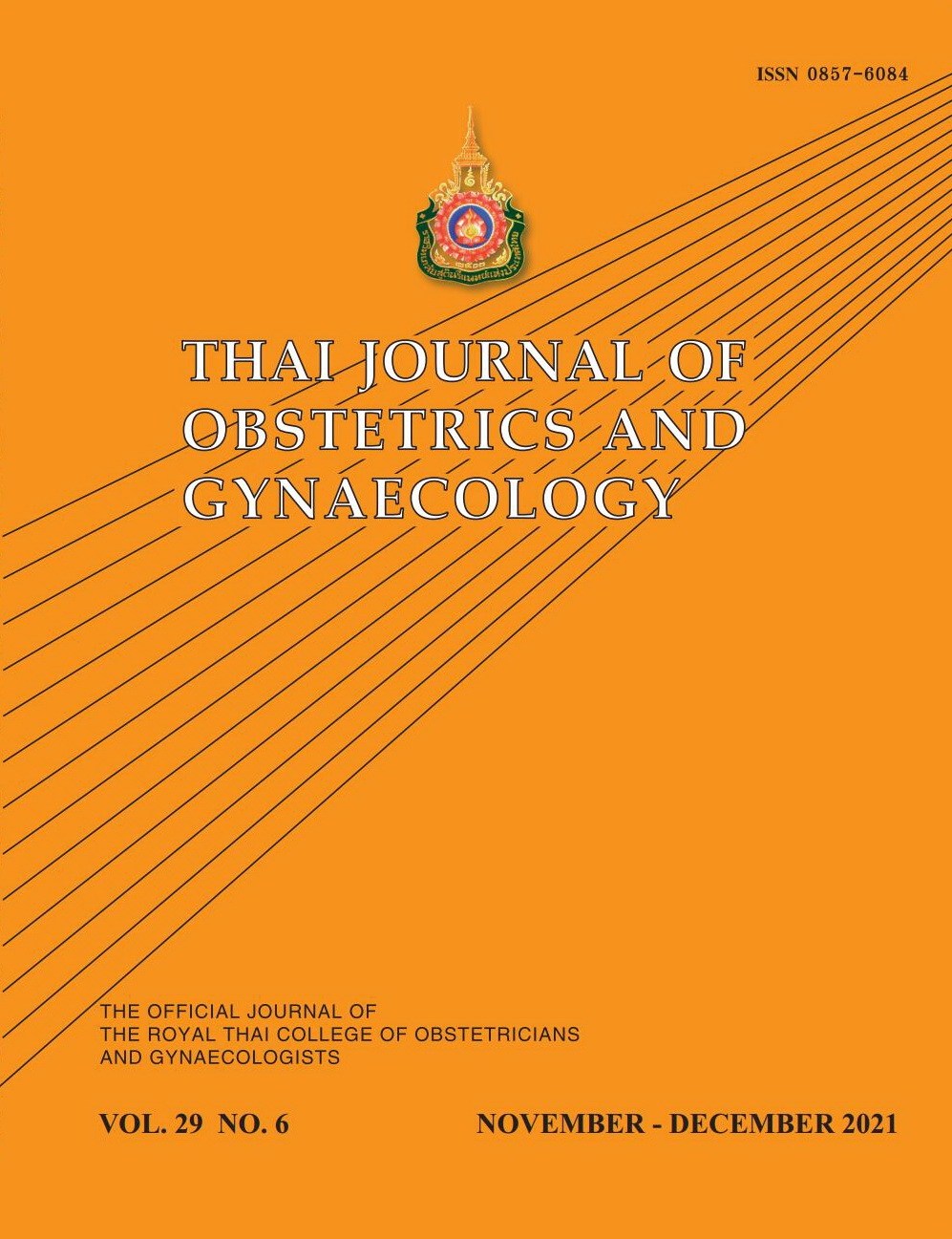Bleeding Patterns after use of Single-rod Etonogestrel Implant in Postpartum Adolescents
Main Article Content
Abstract
Objectives: To study bleeding patterns in postpartum adolescents after use of single-rod etonogestrel implant and to identify its side effects.
Material and method: This was a 6-month prospective study of 60 postpartum adolescents aged 10-19 years old who underwent single-rod etonogestrel implant after giving birth at Rajavithi Hospital. They were followed up on three further occasions in order to fill vaginal bleeding chart diary and undergo physical examination.
Result: A total of 2,767 women gave birth at Rajavithi Hospital between August 1st and Dec 30th 2015. Of these, 249 were postpartum adolescents aged 10-19 years old; 75 of them received single-rod etonogestrel implants that were included in the study. There were 15 dropouts, 60 of them completed the follow-up visits. Bleeding patterns after the implants were: amenorrhea 41.6%; prolonged bleeding 30.0%; infrequent bleeding 11.7%; regular bleeding 11.7%; and irregular bleeding 5%. Side effects, such as emotional instability, dysmenorrhea, nausea and vomiting, weight gain and headache were noted in 28.3% of the participants. Four participants (6.6%) had the device removed due to an experience with prolong bleeding.
Conclusion: The most common bleeding pattern after single-rod etonogestrel implant in postpartum adolescents was amenorrhea. Prolonged bleeding was the main reason for device removal. Minor side effects such as emotional instability, headache were noted in participants.


